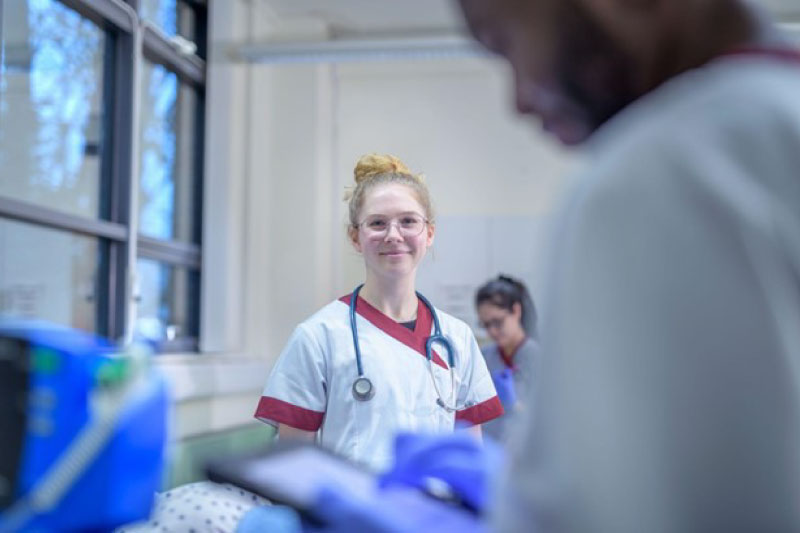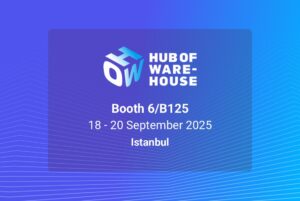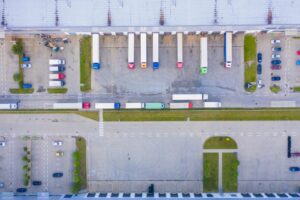Protecting Healthcare Workers: How RTLS in Healthcare Enhances Staff Duress Response
A report from the Occupational Safety and Health Administration (OSHA) reveals that 75% of all workplace assaults in the US take place within healthcare environments. Attacks on healthcare professionals account for 11% of such incidents, leading to employees requiring time off from work. This is an escalating issue and ensuring the safety of frontline workers is more important than ever. This is where RTLS in healthcare comes in handy.
With the rise of these high-stress incidents that healthcare professionals encounter, there is a growing need for effective solutions to bolster their safety. Healthcare professionals deserve a work environment where they feel safe and supported as they care for patients in a hospital. Ensuring the safety of employees is not only a legal requirement, but it’s also an ethical commitment that hospitals should embrace and invest in.
Real-Time Location Systems (RTLS) have emerged as a technology specifically tailored to address the escalating concerns about healthcare staff safety. This technology is transforming the healthcare landscape by enhancing staff duress response.
RTLS in healthcare employs advanced tracking and communication technologies to provide immediate location information. This allows healthcare facilities to quickly pinpoint and respond to any potential dangers that their staff may encounter.
Introducing RTLS: A Real-Time Solution in Healthcare
RTLS is revolutionizing how healthcare facilities monitor and ensure the safety of their staff. It employs sensors, tags, and a comprehensive communication infrastructure for real-time tracking and monitoring.
The core strength of RTLS is its capacity to collect data accurately and analyze it. This provides invaluable insights into patient and staff flow, response times, and potential risks. With this data, administrators and security teams can proactively identify and address situations that might compromise staff safety.
A standout feature of RTLS is its adaptability. It can be customized to cater to the unique needs of various healthcare settings, from hospitals and outpatient clinics to long-term care facilities. Furthermore, RTLS can be smoothly integrated with existing communication systems, which ensures swift coordination and emergency response.
As healthcare institutions place a higher emphasis on the well-being of their staff, RTLS proves to be a pivotal asset. By adopting RTLS in healthcare, providers are significantly advancing towards a safer environment for their dedicated staff. As technology progresses, we can anticipate RTLS to further evolve, setting innovative benchmarks for safeguarding both healthcare workers and patients.
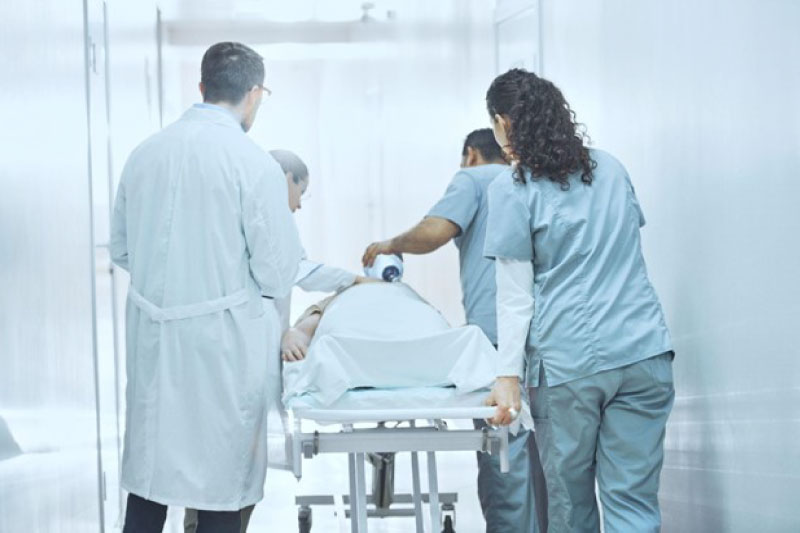
Empowering Healthcare Facilities with RTLS Technology
Healthcare facilities are now experiencing a new horizon of situational awareness and control, thanks to RTLS technology. Its real-time tracking and monitoring capabilities allow administrators to efficiently oversee staff deployment, streamline workflows, and prioritize personnel safety. With RTLS, it is possible to establish geofences and access control zones, immediately alerting administrators when staff enter restricted areas or face potential dangers.
The integration of RTLS in healthcare systems, like nurse call systems and security alarms, heightens response efficiency. When emergencies strike or staff finds themselves in distressing situations, the system springs into action, sounding alerts and promptly notifying response teams. This seamless integration significantly cuts down response times and mitigates potential threats to healthcare professionals.
As healthcare RTLS provides valuable data on staff movements and activities, healthcare facilities can utilize this information to identify patterns, potential bottlenecks, and areas for improvement. Such data-driven observations are invaluable for informed decision-making, fostering optimized operations and proactive safety measures.
Beyond its immediate safety features, RTLS also bolsters a positive work environment. Knowing their institution champions their safety through advanced technology, employees feel cherished and secure. This sentiment not only elevates staff morale but also cultivates loyalty and ultimately uplifts patient care standards.
Real-Time Tracking for Immediate Assistance
RTLS technology’s real-time tracking is akin to a guiding beacon for healthcare professionals during emergencies. Its precision in identifying staff locations within facilities allows for rapid assistance during pressing moments.
In the face of a crisis, RTLS promptly informs specific responders, be it security personnel or rapid response units. These alerts are comprehensive. They detail the staff member’s location and the nature of the emergency. They also take into account any preset action plans tailored to diverse scenarios. Such crisp communication streamlines the rescue process, guaranteeing timely intervention.
RTLS tracking is particularly beneficial for high-risk areas, such as psychiatric units, emergency departments, or isolation wards. Here, staff may encounter unpredictable situations or potential hazards from patients. Constant surveillance through RTLS reassures their safety and guarantees instantaneous support during incidents.
However, the benefits of hospital RTLS extend beyond immediate crises. The technology shines a light on workflow management, offering a clear view of staff movement patterns and resource allocation. Such insights empower healthcare administrators to iron out inefficiencies and fine-tune processes, driving operational excellence.
In a nutshell, real-time tracking doesn’t just provide quick assistance; it nurtures a sanctuary of safety for healthcare staff. This ensures swifter patient responses and a robust approach to emergencies, elevating the healthcare experience for all involved.
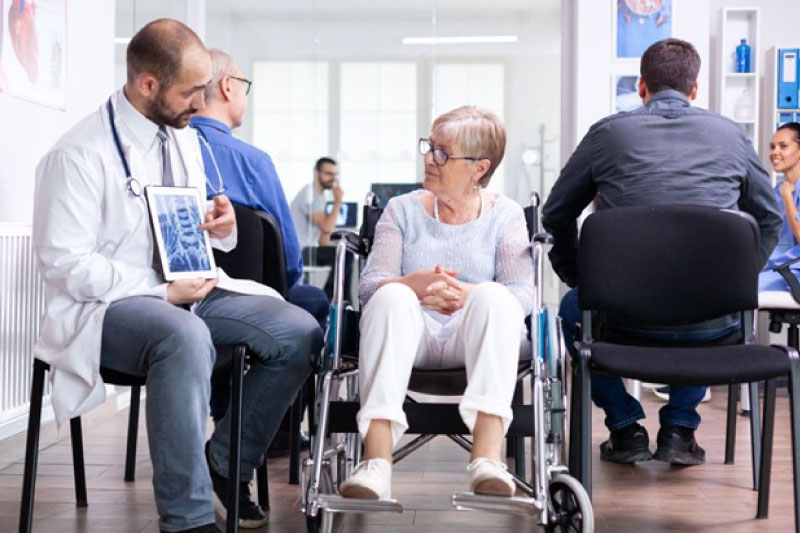
Enhancing Staff Communication and Coordination
In healthcare settings, effective communication and seamless coordination are paramount, especially during emergencies. RTLS in healthcare technology elevates these communication channels, empowering healthcare teams to work cohesively and respond swiftly to evolving situations.
Integrating RTLS with existing communication systems, whether smartphones or two-way radios, ensures that healthcare staff receive real-time updates and emergency alerts directly on their devices. Such immediate connectivity facilitates the swift relay of crucial information, guaranteeing unified action among team members during critical situations.
During high-pressure events, such as code blue emergencies or security breaches, every moment is crucial. RTLS in healthcare system allows administrators to design predefined emergency protocols. When activated, these protocols automatically alert relevant staff and response teams. This automation eliminates potential lag in notifying personnel, thus refining the entire emergency response sequence.
Beyond just communication, RTLS plays an essential role in efficient staff tracking and asset management. This results in smoother patient flow and optimized resource allocation. Being aware of the exact location of medical equipment, like crash carts or defibrillators, ensures they are promptly accessible during crises, further reducing response times.
Elevated communication and collaboration don’t just boost staff safety; they also resonate with better patient outcomes. When healthcare professionals can work in harmony and react without delay, they provide prompt and effective care, enhancing the overall quality of healthcare services.

Improving Emergency Response and Crisis Management
RTLS in healthcare technology plays a pivotal role in elevating emergency response and crisis management within healthcare facilities. With real-time patient tracking and instant alerts, both healthcare administrators and security personnel can quickly mobilize the relevant response teams, ensuring rapid and synchronized action during emergencies.
In such moments, every second is of the essence. The RTLS system, by providing an instantaneous overview of the location of equipment and staff, enables response teams to swiftly navigate the facility and reach the incident’s epicenter without hindrance. Such efficiency in movement significantly reduces response times, allowing medical professionals to offer immediate care and support to patients and colleagues in distress.
Another feature of RTLS is its capability to establish geofences and access control zones, bolstering security during crises. If specific areas necessitate restriction or lockdown, the system promptly flags any unauthorized access attempts, nipping potential threats in the bud.
Additionally, RTLS aids in post-incident analysis and evaluation. By reviewing data and monitoring staff activities during emergencies, healthcare facilities can pinpoint areas in their protocols that need refinement. Such insights facilitate the evolution of emergency strategies, arming staff for future challenges and fortifying the safety of the healthcare environment.
Equipped with healthcare RTLS, healthcare institutions boast a sophisticated emergency response system. This not only bolsters staff confidence but also enhances patient care, fortifying the institution against unforeseen challenges and safeguarding the health of patients and frontline professionals.
Minimizing Response Time and Maximizing Efficiency
In high-stakes healthcare scenarios like medical emergencies or security threats, swift actions can spell the difference between success and failure. RTLS emerges as an indispensable tool, slashing response times and amplifying overall efficiency.
By providing real-time location data, RTLS in the healthcare system allows administrators and response teams to identify the nearest and most suited personnel for any given situation. When a crisis emerges, the system automatically alerts the closest staff members, equipping them to react without delay.
The seamless integration of RTLS with communication systems simplifies the alert process. Direct notifications to smartphones or other communication devices outpace traditional alert methods in speed and efficiency.
Reducing response times positively impacts patient outcomes and bolsters staff safety. With the rapid support framework provided by RTLS, healthcare professionals can navigate challenging scenarios with assurance, knowing that backup is just a moment away.
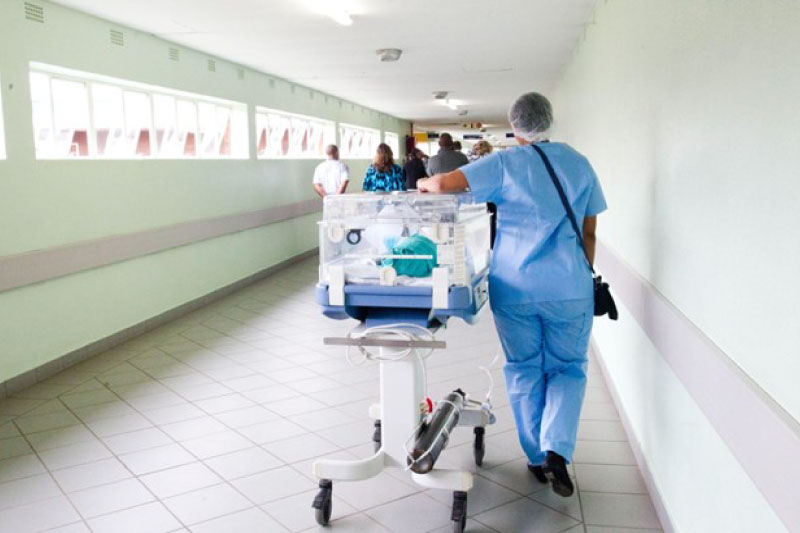
Enhancing Workplace Safety Culture with RTLS in Healthcare
A robust workplace safety culture is indispensable in ensuring the well-being of healthcare staff and delivering top-tier patient care. In this regard, RTLS in healthcare technology emerges as a cornerstone for bolstering safety cultures within healthcare institutions.
By adopting RTLS for staff protection, healthcare establishments signal their unwavering commitment to employee safety and well-being. Such proactive measures engender a positive work ambiance, cultivating trust and allegiance among healthcare practitioners.
RTLS offers staff an additional shield of security. The assurance that their whereabouts can be pinpointed and that immediate help is accessible during crises boosts the confidence of healthcare professionals, allowing them to carry out their roles with an enhanced sense of security.
Moreover, the adoption of RTLS underscores an organization’s drive to harness innovation for safeguarding its personnel. This forward-thinking approach appeals to elite professionals, amplifying staff retention. After all, professionals are naturally inclined towards institutions that prioritize their safety.
Introducing healthcare RTLS can also double as a pedagogical instrument. Educating staff about the technology’s merits and functionalities fosters a safety-centric ethos, prompting them to assimilate novel safety guidelines and protocols.
Overall, RTLS propels a safety-centric culture where team members are proactive stakeholders in ensuring the well-being of their peers, patients, and themselves. Healthcare facilities fortified with such a culture witness augmented efficiency, productivity, and patient contentment.
Data-Driven Insights for Continuous Improvement
RTLS yields a treasure trove of data, empowering healthcare facilities to perpetually refine their safety and operational blueprints.
By scrutinizing patterns like staff movements, reaction times, and emergency incidents, healthcare overseers can spot potential shortcomings and initiate targeted rectifications. Such data-driven conclusions enable healthcare management to refine operations, judiciously allocate resources, and strategize staff deployment during pivotal moments.
Further, data analysis through RTLS enables the identification of high-risk zones within establishments. Recognizing areas where staff confront heightened risks equips administrators to craft bespoke safety guidelines and channel supplementary resources.
RTLS also chronicles data concerning staff duress situations, equipping healthcare establishments to dissect and gauge each occurrence. This deep dive can unearth recurrent triggers, setting the stage for crafting specialized training regimens to amplify staff readiness and reaction.
Additionally, post-incident appraisals of medical assets via RTLS data furnish profound insights into response mechanisms, spotlighting potential enhancements. Such revelations feed into the perfection of emergency response systems, priming healthcare personnel for impending hurdles.
Employing data-driven insights also champions a culture of ceaseless refinement within healthcare settings. When decisions spring from evidence and tangible data, it spawns an environment where protective measures undergo perpetual refinement, aligning with the dynamic requirements of the healthcare sector.
Future Perspectives: RTLS Advancements in Healthcare
The future of RTLS in healthcare is ripe with potential, promising to further revolutionize staff protection and crisis response. As technology advances, RTLS in healthcare systems are projected to become even more refined and efficient. With enhanced tracking capabilities and more robust sensor networks, these systems will offer even greater precision in real-time patient location data, allowing healthcare facilities to respond more promptly and accurately in emergencies.
Integrating artificial intelligence and machine learning with RTLS will open the door to predictive analytics. By analyzing historical data and patterns, the system can anticipate potential risks and recommend proactive measures to mitigate threats to staff safety.
A noteworthy development on the horizon is the integration of healthcare RTLS with wearable technology. Healthcare professionals may soon utilize smart badges or wristbands that not only provide real-time location data but also monitor vital signs and stress levels. This granular data will facilitate a holistic view of staff well-being during high-stress events, ensuring their health remains a top priority.
Moreover, merging RTLS with telemedicine and telehealth platforms presents an intriguing possibility. In remote care scenarios, RTLS could bolster communication between on-ground staff and remote medical experts, amplifying emergency response capabilities in areas with limited healthcare access.
As these innovations come to fruition, RTLS is set to reinforce its crucial role in reshaping healthcare safety and crisis management. It remains poised to become an indispensable tool in safeguarding healthcare professionals.
The Solution at Hand: Enhancing Safety and Empowering Business Continuity with RTLS in Healthcare
In today’s dynamic healthcare environment, the ability to accurately track locations, enact efficient response mechanisms, and leverage data-driven insights is vital. This is where RTLS steps in, addressing these challenges by enhancing staff protection, fostering informed decision-making, and paving the way for upcoming advancements like AI and wearables.
Recognizing the complexities of RTLS, businesses require a partner adept at navigating the intricate nuances of RTLS and delivering solutions tailored to specific needs. Litum fits this role, offering expertise in RTLS and providing solutions that support not just daily operations but also prioritize sustainability.
Through our advanced RTLS in healthcare system designed for patient flow and safety, healthcare facilities can optimize resource allocation and promptly address patient needs. Furthermore, our asset tracking system provides clear insight into equipment status and location, promoting both cost-effectiveness and operational efficiency.
Interested in exploring how Litum’s RTLS can bring transformative changes to your operations? Reach out to us today.
